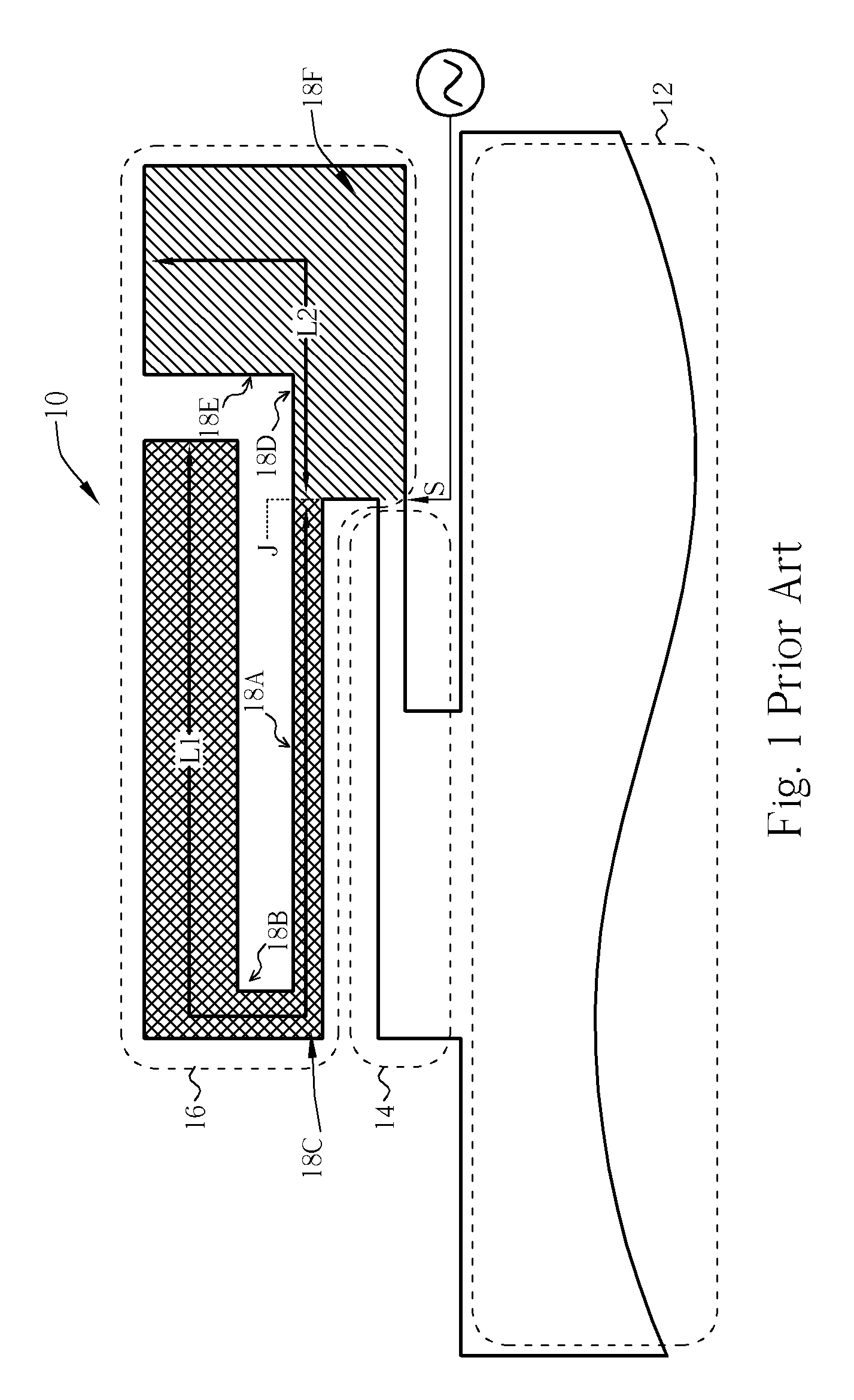Antenna Structure
a technology of antennas and antennas, applied in the field of antennas, can solve the problems of inability to integrate multiple frequencies for transmitting and receiving radio signals, and the inability to meet the compact size requirements of the information industry
- Summary
- Abstract
- Description
- Claims
- Application Information
AI Technical Summary
Benefits of technology
Problems solved by technology
Method used
Image
Examples
Embodiment Construction
[0017]FIG. 1 shows an embodiment of the antenna 10 according to the invention. The antenna 10 includes a ground element 12, an interconnecting element 14, and a radiating element 16. Each component can be formed by an electrically conductive surface, for example, by a conductive layer in a printed circuit board. As shown in FIG. 1, the ground element 12 is used to connect with the ground, and the radiating element 16 and the ground element 12 are separated but mutually connected by the interconnecting element 14 disposed between. The radiating element 16 is divided into two radiating traces in which a crosshatched region is a first radiating trace L1, and a single-hatched region is a second radiating trace L2. The two radiating traces L1 and L2 use the interconnecting element 14 to connect with the ground element 12. In this embodiment, the interconnecting element 14 has two bent segments, so the signal can input to and output from the antenna 10 by one feeding point S of signals. I...
PUM
 Login to View More
Login to View More Abstract
Description
Claims
Application Information
 Login to View More
Login to View More - R&D
- Intellectual Property
- Life Sciences
- Materials
- Tech Scout
- Unparalleled Data Quality
- Higher Quality Content
- 60% Fewer Hallucinations
Browse by: Latest US Patents, China's latest patents, Technical Efficacy Thesaurus, Application Domain, Technology Topic, Popular Technical Reports.
© 2025 PatSnap. All rights reserved.Legal|Privacy policy|Modern Slavery Act Transparency Statement|Sitemap|About US| Contact US: help@patsnap.com



